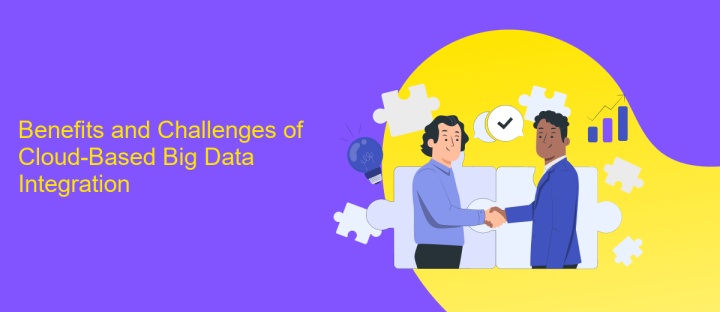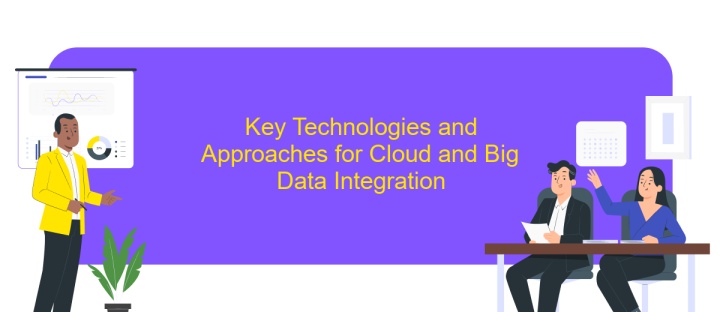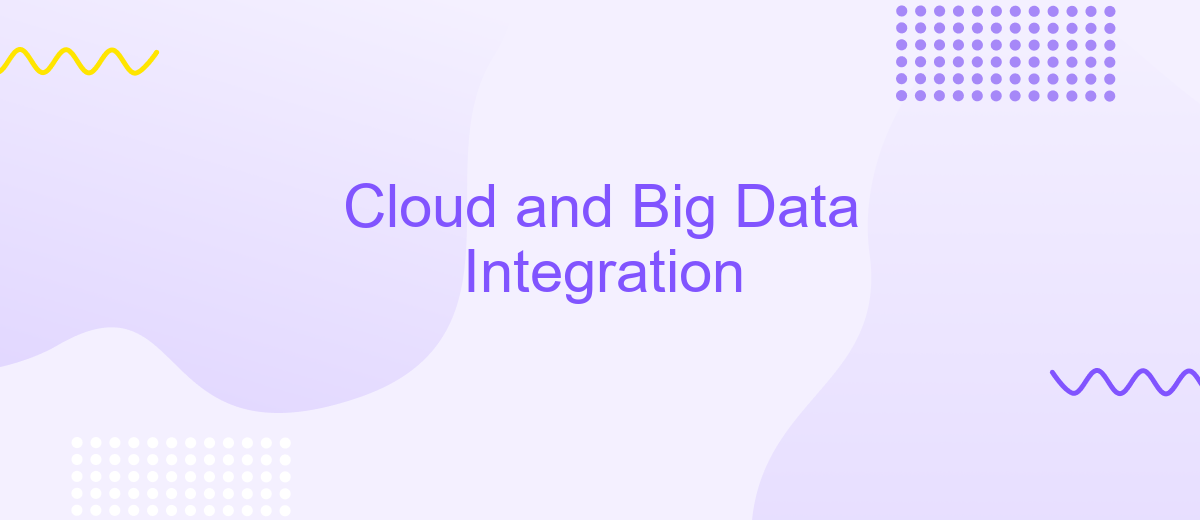Cloud and Big Data Integration
In today's digital era, the integration of cloud computing and big data has become a pivotal strategy for businesses aiming to harness the power of data-driven insights. This synergy not only enhances data accessibility and storage scalability but also enables real-time analytics and decision-making. By leveraging cloud platforms, organizations can efficiently manage vast datasets, driving innovation and gaining a competitive edge in the ever-evolving market landscape.
Introduction to Cloud and Big Data Integration
In today's rapidly evolving digital landscape, the integration of cloud computing and big data technologies has become a critical factor for organizations aiming to harness the power of data-driven insights. Cloud computing offers scalable resources and flexible infrastructure, enabling businesses to store and process vast amounts of data efficiently. Meanwhile, big data analytics provides the tools and methodologies necessary to extract meaningful information from complex datasets. The convergence of these technologies allows for enhanced data management, improved decision-making, and the ability to drive innovation across various industries.
- Scalability and flexibility through cloud resources
- Efficient data storage and processing capabilities
- Advanced analytics for extracting valuable insights
- Improved collaboration and accessibility
- Cost-effective solutions for data management
By integrating cloud and big data technologies, organizations can overcome traditional data handling limitations and unlock new opportunities for growth. This synergy not only supports the efficient management of data but also facilitates real-time analytics and predictive modeling, empowering businesses to stay competitive in an increasingly data-centric world. As a result, cloud and big data integration is poised to play a pivotal role in shaping the future of digital transformation.
Benefits and Challenges of Cloud-Based Big Data Integration

Cloud-based big data integration offers numerous benefits, including scalability, flexibility, and cost-efficiency. By leveraging cloud platforms, organizations can easily scale their data operations to accommodate growing volumes of data without significant infrastructure investments. This flexibility allows businesses to adapt quickly to changing demands and integrate data from diverse sources. Additionally, cloud solutions often operate on a pay-as-you-go model, reducing upfront costs and enabling companies to allocate resources more effectively. Services like ApiX-Drive facilitate seamless integration by providing user-friendly tools to connect various applications and automate data flows, enhancing overall efficiency.
Despite these advantages, cloud-based big data integration presents challenges such as data security, privacy concerns, and potential latency issues. Ensuring the security of sensitive data is paramount, requiring robust encryption and compliance with regulations. Privacy concerns arise from data being stored and processed off-premises, demanding strict access controls and monitoring. Latency can also be problematic, particularly for real-time data processing, necessitating optimized network configurations. To address these challenges, organizations must carefully select cloud providers and integration tools that prioritize security and performance, ensuring a reliable and secure data integration process.
Key Technologies and Approaches for Cloud and Big Data Integration

Cloud and Big Data integration is pivotal for modern enterprises seeking to leverage vast datasets for strategic insights. As organizations increasingly migrate to the cloud, integrating these technologies requires a robust framework that ensures seamless data flow and accessibility. The integration process enhances scalability, flexibility, and real-time analytics, enabling businesses to remain competitive in a data-driven world.
- Data Lakes: These centralized repositories allow for the storage and analysis of structured and unstructured data, facilitating easy access and processing.
- ETL Tools: Extract, Transform, Load (ETL) tools are essential for transforming raw data into meaningful insights, ensuring data quality and consistency.
- API Management: APIs enable communication between different systems, ensuring smooth data exchange and integration across cloud platforms.
- Data Virtualization: This technology allows users to access and manipulate data without needing to know its physical location or format, enhancing integration efficiency.
- Machine Learning: Leveraging machine learning algorithms helps in predictive analytics and automating data-driven decision-making processes.
By adopting these key technologies, organizations can effectively integrate cloud and big data solutions, unlocking new opportunities for innovation and efficiency. This integration not only optimizes operational processes but also empowers companies to harness the full potential of their data assets.
Real-World Use Cases and Examples

Cloud and Big Data integration is transforming industries by enabling organizations to harness vast amounts of data for strategic insights. In healthcare, this integration facilitates real-time patient monitoring and predictive analytics, improving patient outcomes and operational efficiency. By leveraging cloud-based platforms, hospitals can store and analyze data from various sources, such as electronic health records and wearable devices.
In the financial sector, cloud and big data integration supports fraud detection and risk management. Financial institutions can analyze transaction data in real-time to identify unusual patterns and prevent fraudulent activities. This integration also aids in personalized banking experiences by analyzing customer behavior and preferences.
- Retail: Enhances customer experience through personalized marketing and inventory management.
- Manufacturing: Optimizes production processes by analyzing machine data for predictive maintenance.
- Logistics: Improves supply chain efficiency by analyzing data from IoT devices and tracking systems.
Overall, cloud and big data integration provide organizations with the agility and scalability needed to innovate and stay competitive. By leveraging these technologies, businesses can uncover hidden patterns, make data-driven decisions, and enhance customer satisfaction across various domains.
- Automate the work of an online store or landing
- Empower through integration
- Don't spend money on programmers and integrators
- Save time by automating routine tasks
Future Trends and Considerations for Cloud and Big Data Integration
As cloud technology and big data continue to evolve, their integration is expected to become more seamless and sophisticated. Emerging trends indicate a shift towards more automated and intelligent integration processes, leveraging AI and machine learning to enhance data analytics and decision-making. These advancements will enable businesses to process and analyze vast amounts of data in real-time, leading to more informed strategic decisions. Additionally, the rise of edge computing will play a crucial role, allowing data processing closer to the source and reducing latency.
Organizations must consider the growing importance of data security and compliance in cloud and big data integration. Services like ApiX-Drive can streamline integration processes by providing automated workflows that connect various applications and data sources, ensuring data is efficiently and securely transferred. As businesses continue to adopt cloud-based solutions, the demand for scalable and flexible integration platforms will increase, highlighting the need for robust tools that can adapt to evolving technological landscapes. Emphasizing interoperability and data governance will be essential in navigating future challenges in cloud and big data integration.
FAQ
What is Cloud and Big Data Integration?
How can Cloud and Big Data Integration benefit my business?
What challenges might I face with Cloud and Big Data Integration?
How can I automate Cloud and Big Data Integration processes?
What are the key considerations when choosing a Cloud and Big Data Integration solution?
Strive to take your business to the next level, achieve your goals faster and more efficiently? Apix-Drive is your reliable assistant for these tasks. An online service and application connector will help you automate key business processes and get rid of the routine. You and your employees will free up time for important core tasks. Try Apix-Drive features for free to see the effectiveness of the online connector for yourself.


